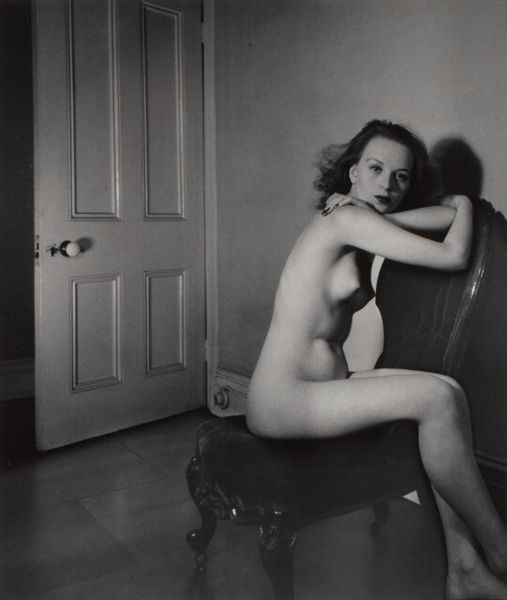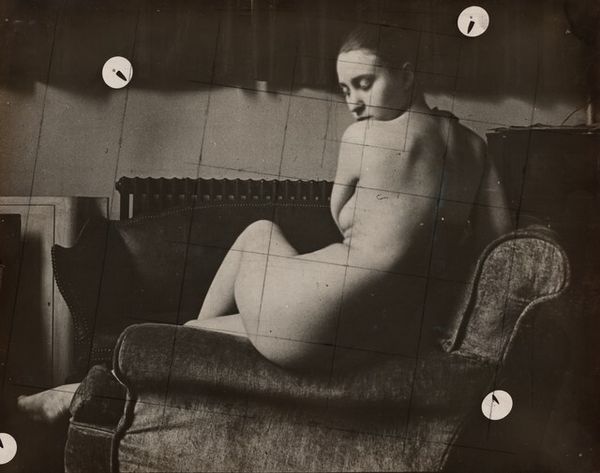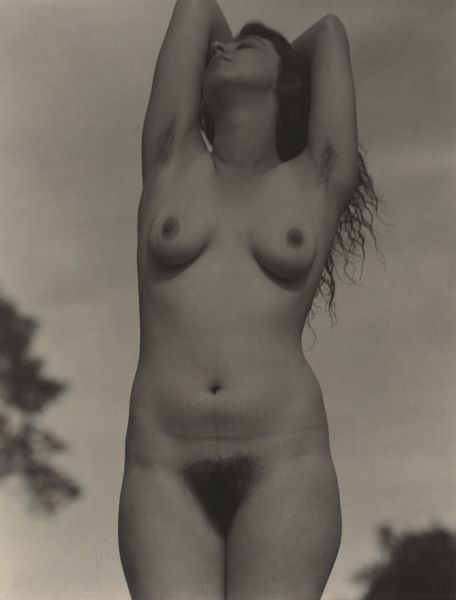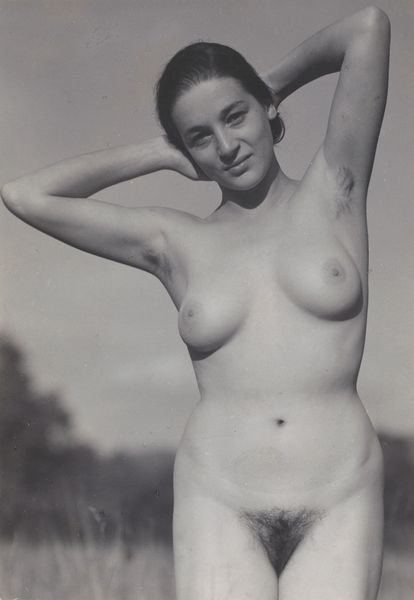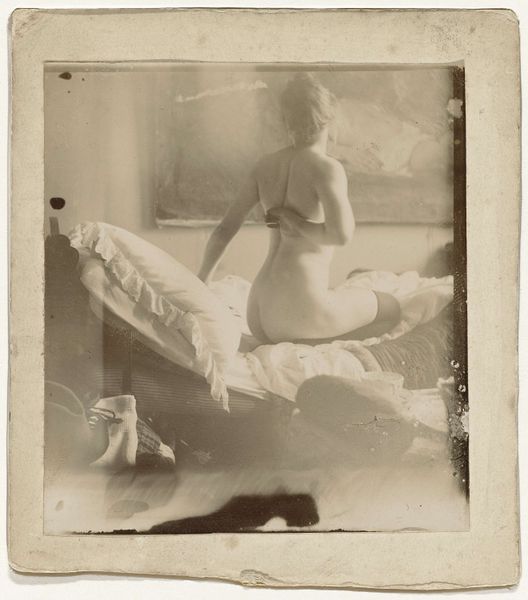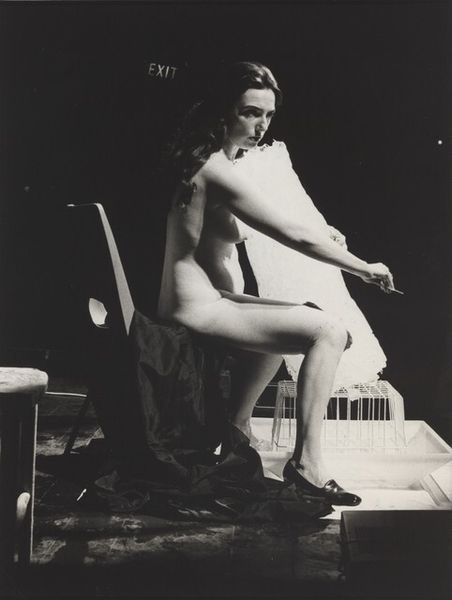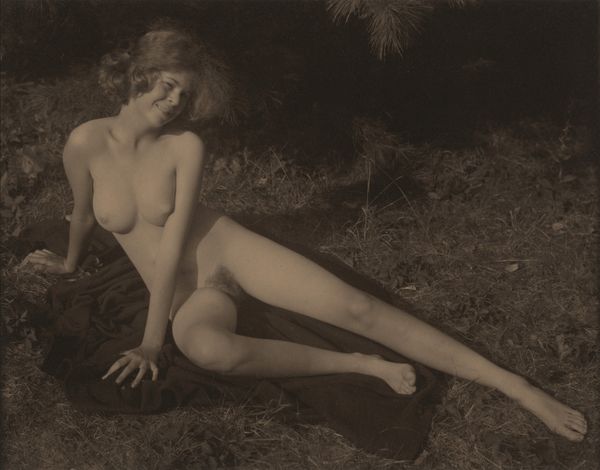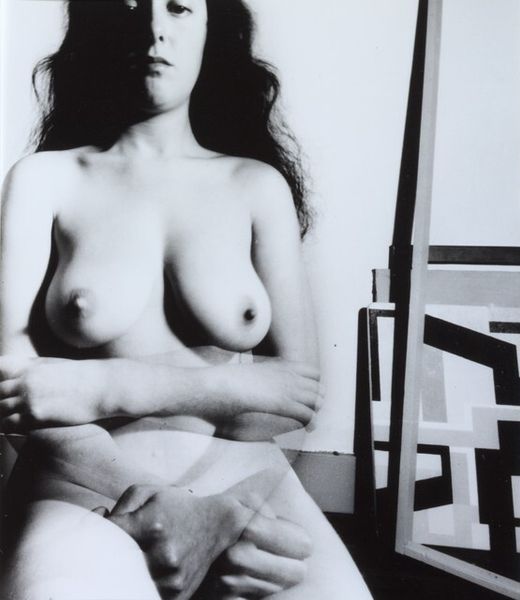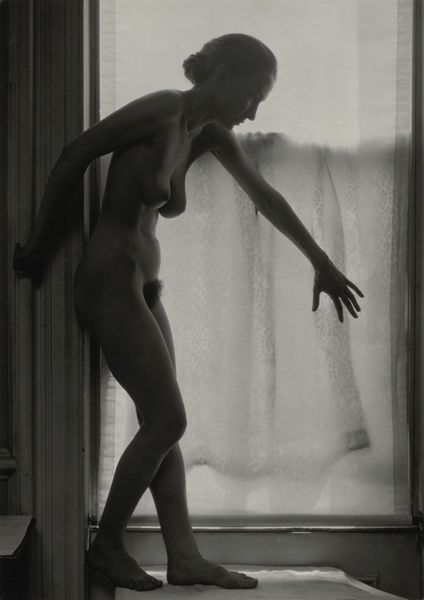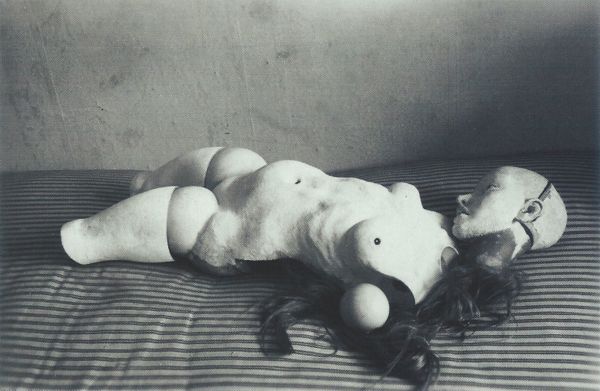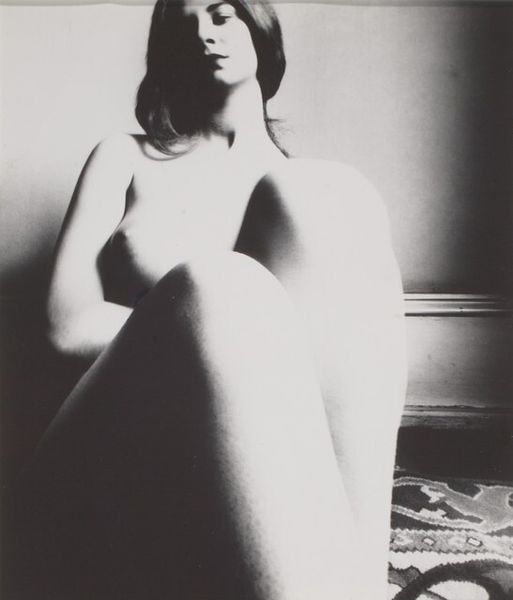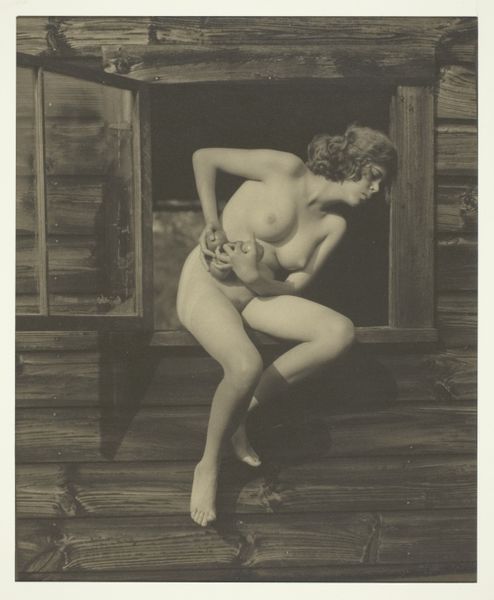
photography, gelatin-silver-print
#
portrait
#
photography
#
black and white
#
gelatin-silver-print
#
monochrome photography
#
monochrome
#
nude
#
modernism
#
realism
#
monochrome
Dimensions: image: 22.9 x 19.6 cm (9 x 7 11/16 in.)
Copyright: National Gallery of Art: CC0 1.0
Editor: This gelatin-silver print is Bill Brandt’s "Hampstead, London" from 1945. The composition, with the nude model in such a domestic space, creates a slightly unsettling feeling. How do you approach interpreting this work? Curator: For me, the interest lies in how Brandt, through the act of photography itself, is engaging with a specific mode of production and consumption tied to portraiture and the depiction of the human body. Notice how the grainy texture of the gelatin-silver print and the sharp contrast between light and shadow—choices determined by material conditions and photographic techniques—construct a certain kind of reality. Do you think the backdrop adds to or distracts from the image? Editor: I think the backdrop, the floral wallpaper, the glimpse outside the window... it all adds a sense of place. Curator: Exactly. And isn't that domestic space – a space traditionally relegated to women – itself a site of labour and production? This brings me to ask what are the gender politics here? Brandt isn’t just presenting a body, he’s actively constructing an image through technical and material manipulation, reflecting social constructs back at the viewer. Consider what would need to take place in the labor to take a portrait, and a nude portrait at that? The labor and resources of maintaining such images? The gaze is, literally, material. Editor: So you're saying the process of creating the photograph, from the materials used to the social context, is just as important as the subject matter itself? Curator: Absolutely. Brandt’s choice of materials and methods are not neutral. They’re integral to understanding how the image functions as a commodity within a specific social and economic landscape. I see this piece speaking to labor practices, social expectation, and materiality coming together. Editor: This definitely gives me a different way of looking at the piece. Thanks for pointing out how much the material reality contributes to how we understand its cultural significance.
Comments
No comments
Be the first to comment and join the conversation on the ultimate creative platform.
